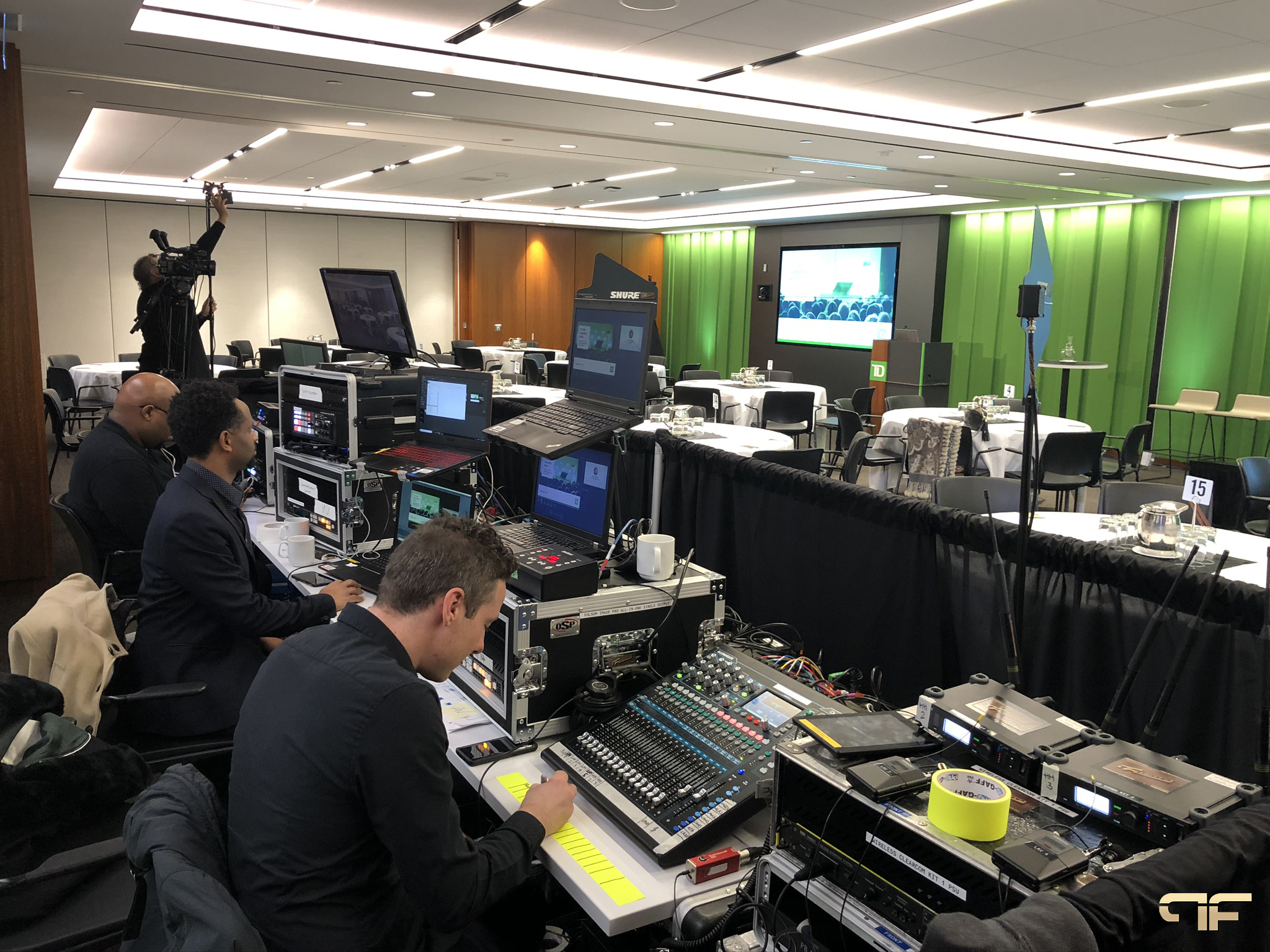
1. Determine your client’s basic AV event requirements
Consider this: it’s a regular day in the life of an event planner. The phone rings and your client requests your event planning assistance for an upcoming event. Their only AV requests for the event or trade show are a screen, a projector, and sound with microphones. You begin probing for more information.
2. Screen aspect ratio for the presentation
You can pick a screen type once you’ve worked out the event’s fundamental format. One or two huge flat-screen monitors are an excellent alternative if you have a smaller general session area and audience size. These screens are typically utilized in a more intimate situation when the audience is close to the stage and presenter.
Screens and projectors are appropriate for a larger room and audience. This comes in handy especially if the presenter has a large amount of data to share so people can read smaller fonts in the back row. Presentation screens are 4:3 format or 16:9 format (widescreen), so communicate with your client to ensure presentations are designed in the same format as the projection screens.
3. Make sure you have all of the necessary audio equipment.
Make sure there’s a fair size soundboard or mixer for house sound and external sound systems that are brought in. Your AV provider can recommend a soundboard that can handle various microphone inputs and computer inputs based on your client’s demands. Use a PC for video playback and a Direct Box to help balance audio going into the soundboard/mixer and prevent hum and buzzing.
Include a PA system with enough speakers to cover the entire space so that audio isn’t a problem. If music is a big part of the show or there are performers on stage, you’ll need a more powerful sound system.
On a podium or stage, use a mix of cordless lavalier microphones, handheld microphones, and one tethered microphone (in general, four to eight maximum). However, don’t go overboard; too many mics might be difficult to handle.
If you’re still baffled by audio, call an audio specialist to help you out. It will save you a lot of time and worry during the live event by having an expert on hand to assist you with any difficulties that arise.
4. Discuss the sort of video switcher or mixer with your AV event supplier.
If you have more than one computer to share on the screen, or if you want to integrate camera video of presenters on the screen, you’ll need a video switcher or mixer. You’ll need a seamless video switcher for your hybrid event.
You could utilize a crunch box if you have a simple show with simply a presentation and a few movies. Crunch boxes are simple video switchers that work well for simple presentations. As an event planner, you understand the value of having a backup plan.
Consider the video switcher or mixer as a backup plan. With the push of a button, you may rapidly switch to the backup machine if one of your computers stops.
5. Use the correct technologies to put your presenter at ease.
Providing your presenter (and your customer) with the appropriate technology may be all it takes to put their minds at ease. Give them a confidence monitor, which allows them to see their material without looking away from the screen. It’s a simple method for your presenter to keep the audience interested. Don’t forget to bring a remote clicker with a laser pointer so the presenters may manage their content while the event is going on.
6. Illuminate the stage.
Event lighting should be another item on your AV planning checklist. Most venues feature basic stage wash lighting to ensure that the presenters are properly seen. You may use stage lighting to add an extra layer of drama to your performance. Additional lighting may give your entire event design a more inspirational, dynamic look while also allowing you to trademark it using gobos.
7. Engage the services of an AV event producer.
The given checklist covers the majority of the essentials for general sessions. Other demands, such as video recording, webcasting, or bringing in remote presenters via video or conference call, may arise as your event progresses.
Hiring an event producer for more complicated performances is one of the finest decisions you can make for the execution of your program and your budget. The producer is an important collaborator who is familiar with the content, the target audience, the technology, and the budget. An event producer could be a fantastic option to assist you to accomplish event success if you’re seeking to knock your client’s and guests’ socks off.

Comments are closed.